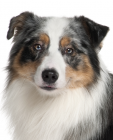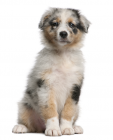Australian Shepherd Dog
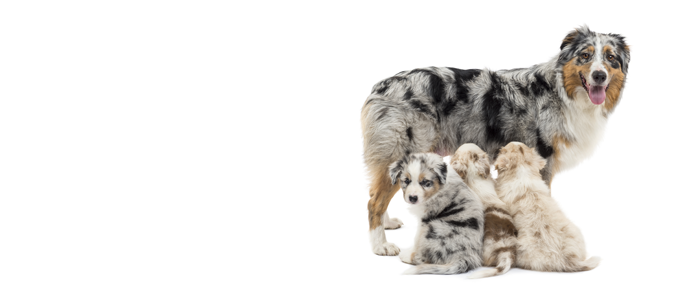
In my own words
Howdy!
I’m a rooting tooting Herding dog. What’s that? Ball? Sorry I get so excited. I never really shook my puppy love of playing. It’s helpful when I’m playing with youngsters. I can’t help but be protective of them. We play catch a heck of a lot. I don’t easily tire so it’s just swell for me. The more active the better I say. Give me a job and I’ll get it done in a second with not time to waist.
Now, I’m easy going so it doesn’t take a lot to keep me.
They call me ‘The Aussie’, which is a little confusing on account of the fact I originally came from Europe. My ancestors were exported to ranches in America and Australia. I myself am a cowboy’s dog.
Yeewoof!
My ideal owner(s)
Singles
Ranchers
Outdoorsy types
Families
What they say about me
Loyal
Dependable
Easygoing companions.
Love Play
Eager to work
Is this Australian Shepherd for you?
Test your knowledge about the Australian Shepherd
Information essential about the Australian Shepherd Dog
Kennel Club Group:
Breed Group: Herding
Category:
Weight: Males 50-65 pounds (25-29 kg) Females 40-55 pounds (18-25 kg)
Height: Males 20-23 inches (52-58cm) Females 18-21 inches (46-53cm)
Popularity:
The Australian Shepherd has an innate versatility that makes them useful on ranches and farms as a herding dog, retriever, and watchdog.
Breed History:
Despite the misleading name, the Australian Shepherd is not Australian at all, but was developed most likely in the Pyrenees Mountains somewhere between Spain and France, and refined in the U.S. to work as a herding dog on ranches. The breed's principal forebears were most likely Spanish dogs that accompanied the Basque shepherds and herds of fine Merino sheep exported to both America and Australia in the early days of the colonies.
Australian Shepherds became more popular in the mid-twentieth century. They were favourites of ranchers and cowboys for their unique herding talents, but did not enter the American Kennel Club Stud Book until 1991.
Character:
Australian Shepherds are intelligent, delightful, and loyal. They are highly energetic and thrive on being given something to do. They have a high degree of intensity and a "no-quit" attitude. Their herding instinct may be problematic or annoying to their family, as this breed will often attempt to perform this task on everyone or anything that moves.
Australian Shepherds are easy-going, remaining puppy-like even in their adult years. This courageous dog makes a good watchdog for the home. Aussies are excellent with children, even with an active child, as they love to play. A devoted, loyal friend and guardian, for they are naturally protective. They are eager to please, with a sixth sense about what the owner wants.
Australian Shepherds are highly intelligent and easy to train. Its many talents include, retrieving, herding, watchdog, guarding, police work, narcotics detection, search & rescue, agility, competitive obedience and performing tricks.
Temperament:
Australian Shepherds can be a little standoffish at first. Given time, however, they will become comfortable with new people and come out of their shells. They have excellent guarding instincts and a strong sense of loyalty to their families. Australian Shepherds will bark when strangers approach the house, and they’ll sometimes run a few laps around the house for good measure.
Some Australian Shepherds retain strong working-dog genes. This makes them more eager to be in the field and less eager to hang out with the family. These dogs are more inclined to herd people and nip at heels to keep everyone moving, but with proper training these quirks can be worked out.
Whilst aggressive when at work with livestock, the Aussie is gentle with human friends. Australian Shepherds are not the kind of dog to lay around the living room all day or live happily in the backyard with only a fifteen-minute walk. They need much more exercise than that and something to occupy their mind daily or they will become bored, leading to serious behaviour problems. Without enough mental and physical exercise and or a lack of a true pack leader, they can become nervous and destructive if left alone. Socialize well to prevent them from becoming suspicious of strangers.
Conformation:
The Australian Shepherds most identifiable characteristic is the natural or docked bobtail. Their eyes are one of this breeds most commented on feature. Their eyes come in a variety of colours or colour combinations and include blue, amber, hazel, and all shades of brown.
Their ears are triangular and set high, their chests are deep and their tails are straight and naturally short. They have a weather-resistant coat with a moderate texture, creating a little bit of a mane. Overall, Australian Shepherds have strong, square and balanced frames.
Their coats are of moderate length, straight to wavy and weather resistant. The under coat tends to shed twice a year with moderate shedding between these periods.
Hair is short and smooth on the head, outside of the ears, front of the forelegs and below the hocks. Backs of the forelegs are moderately feathered; breeches are moderately full. There is a moderate mane and frill, which is more pronounced in male dogs than females. The front legs are straight, perpendicular to the ground. The feet are oval, compact with close knit, well-arched toes. The front dewclaws are sometimes removed, but back dewclaws are almost always removed
Colour:
The breed’s coat comes in four accepted colours: black, blue merle, red, and red merle. A variety of white and tan markings may appear on the face, chest, front, and rear legs.
Training:
Australian Shepherds are easy to train. They benefit from early socialization and very basic obedience. It is important that they know who the master is or they will attempt to take control. The Australian Shepherd requires firm, fair, consistent, and effective direction. Their high intelligence and keen learning ability make repetitive training boring.
Care:
The Australian Shepherd requires minimal grooming. An occasional brushing with a firm bristle brush will suffice. It is important to do more in depth grooming when they are going through their seasonal shedding. Bathing should only be done when absolutely necessary.
Health:
The Australian Shepherd Dog is susceptible to a myriad of health issues and concerns. The gene for the beautiful merle coloration also carries a blind and deaf factor. This may be expressed only in merle/merle crosses. Be sure to check the hearing on merle puppies. Natural bobtails can result in some offspring with serious spinal defects.
They are also prone to epilepsy, hip dysplasia, cataracts and hypothyroidism.
A healthy Australian Shepherd can live as long as 15 years and mother an average litter size of 6-9 puppies.
You may also like:
If you like Australian Shepherd Dogs, you may be interested in breeds of the same size »

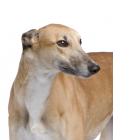
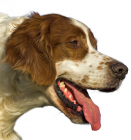

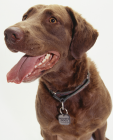
If you like Australian Shepherd Dogs, you may like other breeds with similar characteristics »
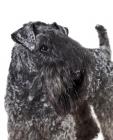
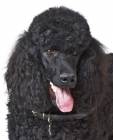



Advice on choosing your breed »
Find an animal shelter or rescue home where a Australian Shepherd Dog is waiting for a new home »
The following grid gives a fast track review, which covers all breeds. You can apply it to help you decide if a Australin Shepherd dog is suitable for you, the environment where you live, your personality and your lifestyle. On the grid, 1= strongly disagree, and 5= strongly agree. For example, if you are looking for a dog that loves exercise, look down the list under Activities, and you will see that Australian Shepherd Dogs need abundance of exercise, scoring 5 for almost all activities. If you want a dog that does not require much groom, look under Grooming, and you will see that the breed requires minimal grooming, scoring 2. You might like to save or print off this section and keep it for reference while you check some other breeds before making your final choice.
Be the first to rate this breed »
|
*PLEASE NOTE: All our breed profiles are general, and all dogs are individuals. Always talk to the breeders and meet the owners you are buying from. Try to meet the dog and its parents if it is a puppy in their home environment.








